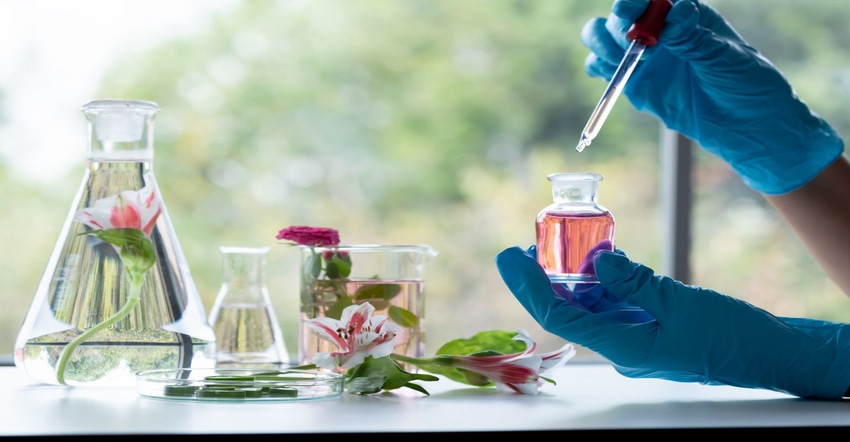Past research done by the American Botanical Council has shown adulteration of natural products is almost as old as the trade in these substances itself.

Botanical ingredient adulterators have become increasingly sophisticated in how they seek to fool chemical analyses. Their many subterfuges have been laid bare in a new paper published by the Botanical Adulterants Prevention Program (BAPP).
The peer-reviewed research was published Jan. 30 in the Journal of Natural Products, the official journal of the American Society of Pharmacognosy (ASP). The co-authors of the paper come from the partners in BAPP: the American Botanical Council (ABC), the American Herbal Pharmacopoeia (AHP) and the National Center for Natural Products Research (NCNPR) at the University of Mississippi.
Adulteration arms race
Past research done by ABC has shown adulteration of natural products is almost as old as the trade in these substances itself. In a never-ending cycle, purchasers of these ingredients have developed ways for verifying what they’re buying is authentic, while the fraudsters have moved in lockstep to defeat those methods.
The game has moved far beyond finding cheap purple juice to cut the wine or ensuring the pile of ground sticks is the right color of brown and tastes bitter enough. Adulterators may now deal in the rarefied realms of chemistry and physics to try to make the tests that buyers use produce the expected results, even if the material being tested is fraudulent.
“Throughout history, unethical people have adulterated foods, spices and medicines,” Mark Blumenthal, founder and executive director of ABC, said in a press release announcing the research. “The explosive growth of the botanical medicine and dietary/food supplement market worldwide has attracted unscrupulous players who are interested more in profit than the health of the users of their ingredients or products. And now some of these fraudsters have gone so far as to manipulate their botanical extracts in such a way as to attempt to fool or trick the prevalent analytical methods in industry and third-party quality control laboratories.”
The new paper (“Botanical ingredient forensics: Detection of attempts to deceive commonly used analytical methods for authenticating herbal dietary and food ingredients and supplements”) lays out the many ways in which adulterators ply their trade so that buyers can be forewarned.
Lead author Stefan Gafner, Ph.D., director of BAPP and ABC’s chief science officer, calls it a “30-second elevator speech” on adulteration.
For every test, there’s a workaround
The fraud methods are grouped based on the analytical approaches employed. The authors cited hundreds of prior papers that delved in detail into the various schemes.
At the bottom end of the scale—in terms of technological sophistication—are ways to defeat macroscopic and organoleptic Q&A procedures. This involves a visual inspection of the plant and assessment of its attributes, such as overall morphology, color or smell, or in some cases, taste or feel.
A very common approach here is to use cheaper materials that have the right color to stain a low-quality batch material so that it looks like the real thing. Examples include azo-dyes added to saffron or adding lead chromate or Metanil Yellow to turmeric rhizomes. In that way, a pile of powdered “saffron” could consist of mostly maltodextrin or a similar filler and still appear to be genuine, if the buyer is not looking too hard.
Moving up the scale, cheaters have ways to dupe microscopes, too. Cheaper plants from the same genus can fool a microscopic inspection if the morphology is similar. It might take a very skilled and practiced eye to spot the differences, and cheaters trade on the fact that not every buyer will have such an expert on staff.
Of course, if a company were using only those methods to verify incoming materials, they are already skating on thin ice. Therefore, most firms devoted to quality control and cGMP (current good manufacturing practices) compliance employ additional chemical and chromatographic methods to the ones above.
Corners are being cut with the above methods, as well.
Adulterators have taken to “spiking” extracts with the same marker chemicals (which can be had for a relative pittance) that would be expected to show peaks on a chromatograph for a given substance. In that way, a severely understrength extract could be made to appear as a full-strength, high-quality product. Other approaches might add in cheap adulterants that give the correct spectrographic results. And the list goes on.
The paper details the kinds of adulteration aimed to defeat UV/Vis spectrophotometry, thin-layer chromatography (TLC) and high-performance thin-layer chromatography (HPTLC), gas chromatography, infrared, mass spectrometry and nuclear magnetic resonance (NMR) spectroscopy, or combinations of these.
Forewarned is forearmed
“Education and awareness are the two most important criteria for identifying adulteration,” co-author Roy Upton, president of AHP, said in the BAPP press release. “A great deal of ‘adulteration’ occurs unbeknownst to the buyer because the tests that are used are inadequate, analysts do not know what potential adulterants to look for, or the adulterations are so sophisticated that they fool even the best compendial or non-compendial tests.”
Upton added, “This article summarizes more than a decade of BAPP’s experience featuring the types of adulteration that most commonly occur and hopefully will better inform those who want to produce quality products.”
About the Author(s)
You May Also Like






.png?width=800&auto=webp&quality=80&disable=upscale)